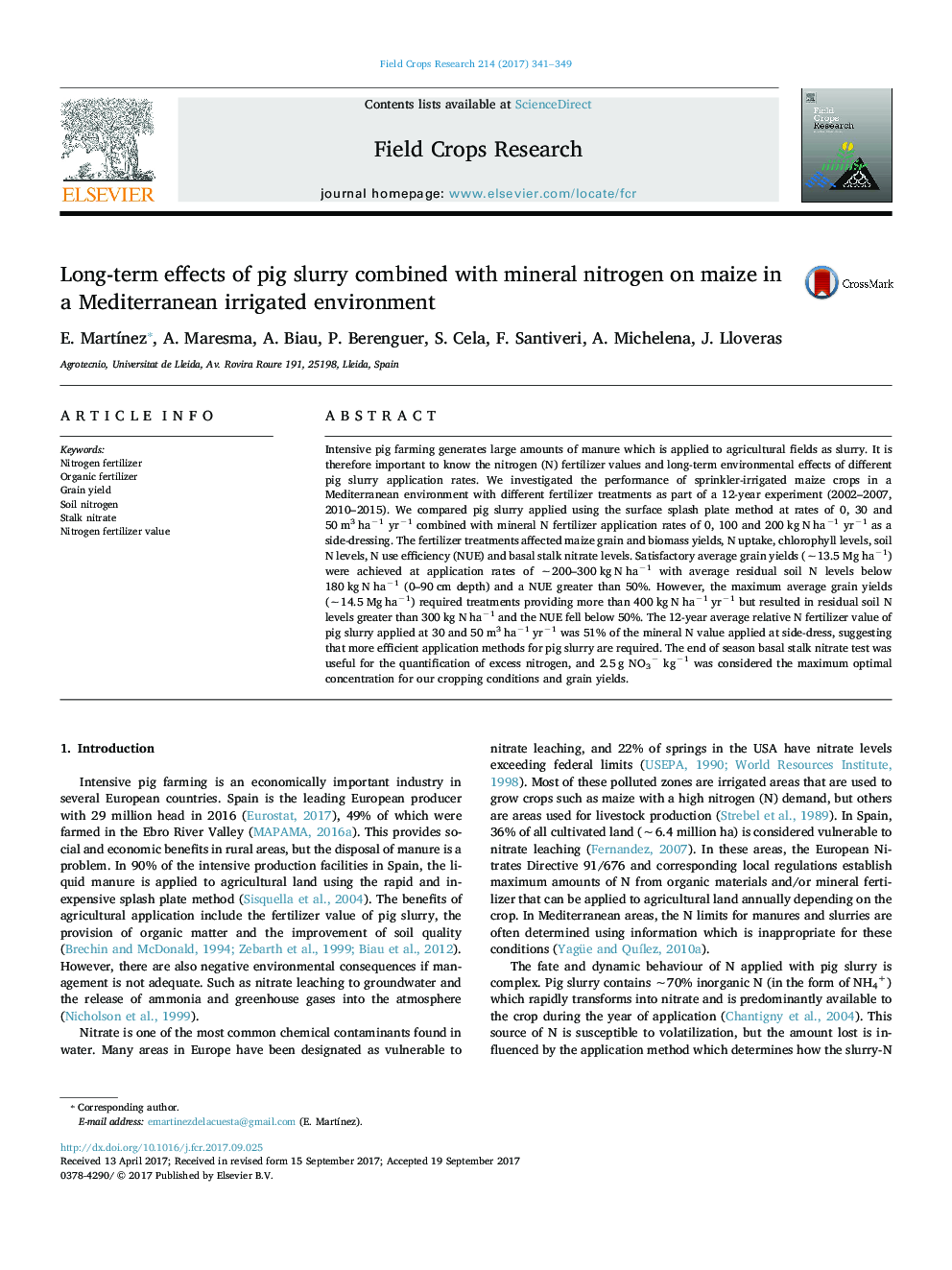| کد مقاله | کد نشریه | سال انتشار | مقاله انگلیسی | نسخه تمام متن |
|---|---|---|---|---|
| 5761397 | 1624649 | 2017 | 9 صفحه PDF | دانلود رایگان |
عنوان انگلیسی مقاله ISI
Long-term effects of pig slurry combined with mineral nitrogen on maize in a Mediterranean irrigated environment
ترجمه فارسی عنوان
اثرات بلندمدت جلبک خوک همراه با نیتروژن مایع در ذرت در یک محیط آبیاری مدیترانه ای
دانلود مقاله + سفارش ترجمه
دانلود مقاله ISI انگلیسی
رایگان برای ایرانیان
کلمات کلیدی
کود نیتروژن، کود آلی، عملکرد دانه، نیتروژن خاک، نیترات ساقه، مقدار کود نیتروژن،
موضوعات مرتبط
علوم زیستی و بیوفناوری
علوم کشاورزی و بیولوژیک
علوم زراعت و اصلاح نباتات
چکیده انگلیسی
Intensive pig farming generates large amounts of manure which is applied to agricultural fields as slurry. It is therefore important to know the nitrogen (N) fertilizer values and long-term environmental effects of different pig slurry application rates. We investigated the performance of sprinkler-irrigated maize crops in a Mediterranean environment with different fertilizer treatments as part of a 12-year experiment (2002-2007, 2010-2015). We compared pig slurry applied using the surface splash plate method at rates of 0, 30 and 50 m3 haâ1 yrâ1 combined with mineral N fertilizer application rates of 0, 100 and 200 kg N haâ1 yrâ1 as a side-dressing. The fertilizer treatments affected maize grain and biomass yields, N uptake, chlorophyll levels, soil N levels, N use efficiency (NUE) and basal stalk nitrate levels. Satisfactory average grain yields (â¼13.5 Mg haâ1) were achieved at application rates of â¼200-300 kg N haâ1 with average residual soil N levels below 180 kg N haâ1 (0-90 cm depth) and a NUE greater than 50%. However, the maximum average grain yields (â¼14.5 Mg haâ1) required treatments providing more than 400 kg N haâ1 yrâ1 but resulted in residual soil N levels greater than 300 kg N haâ1 and the NUE fell below 50%. The 12-year average relative N fertilizer value of pig slurry applied at 30 and 50 m3 haâ1 yrâ1 was 51% of the mineral N value applied at side-dress, suggesting that more efficient application methods for pig slurry are required. The end of season basal stalk nitrate test was useful for the quantification of excess nitrogen, and 2.5 g NO3â kgâ1 was considered the maximum optimal concentration for our cropping conditions and grain yields.
ناشر
Database: Elsevier - ScienceDirect (ساینس دایرکت)
Journal: Field Crops Research - Volume 214, December 2017, Pages 341-349
Journal: Field Crops Research - Volume 214, December 2017, Pages 341-349
نویسندگان
E. MartÃnez, A. Maresma, A. Biau, P. Berenguer, S. Cela, F. Santiveri, A. Michelena, J. Lloveras,
